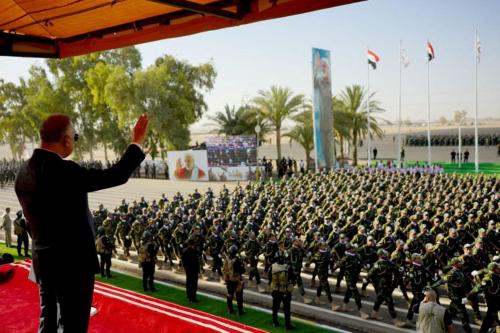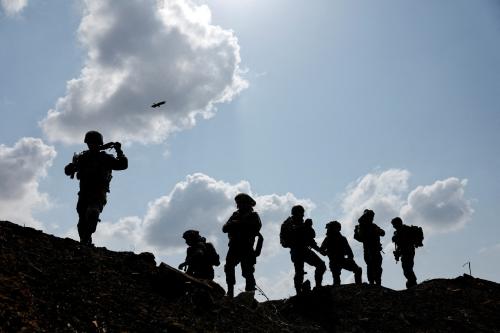With American and NATO combat troops scheduled to depart Afghanistan next year, the relationship between the Afghan Taliban and Pakistan has become more important than ever. It is a complex and complicated nexus. Without doubt, Pakistan and its intelligence service, the Inter-Services Intelligence Directorate of the army (ISI), have more influence over the Taliban than any other country or intelligence service. It provides critical safe haven and sanctuary to the groups’ leadership, advice on military and diplomatic issues, and assistance with fund raising. But its influence is not complete, and whether it could persuade the Taliban to settle for a political settlement in Afghanistan, is unclear at best.
Pakistan’s Support for Survival and Revival of the Taliban
Pakistan has been intimately associated with the Taliban since its birth in the mid-1990s. The ISI provided support to Mullah Omar when he founded the organisation in Kandahar. It had trained Omar even earlier in the 1980s at one of its training camps for the mujahedin that fought the Soviet occupation of the country. Pakistan was one of only three countries that recognised the Taliban’s Islamic Emirate of Afghanistan as the legitimate government of Afghanistan in the late 1990s (Saudi Arabia and the United Arab Emirates were the other two). By 2001, Pakistan was providing the Taliban regime in Kabul with hundreds of advisers and experts to run its tanks, aircraft and artillery, thousands of Pakistani Pashtuns to man its infantry and small units of its Special Services Group commandoes to help in combat with the Northern Alliance. Pakistan provided the oil needed to run the Taliban’s war machine. All of this despite a half dozen United Nations Security Council resolutions calling on all countries to cease aid to the Taliban because it was hosting al-Qaeda and Osama bin Laden. According to the 9/11 Commission, the ISI had mid-wifed the alliance between Mullah Omar and bin Laden, so it was no surprise that Pakistan ignored the UN.
After 9/11, American and allied forces intervened in Afghanistan with a UN mandate and toppled the Islamic Emirate of Afghanistan. The defeated Taliban fighters were ordered by Mullah Omar to scatter and avoid further direct confrontation with the enemy while they regrouped. Many just went home. The leadership and the hard core fled south from Kandahar into Pakistan. Most relocated in Baluchistan around the city of Quetta, where Omar himself settled. He began rebuilding his Taliban in exile. By 2004, it resumed the war inside Afghanistan. Pakistan gave it critical help and assistance. Without it, the Taliban would never have recovered. A NATO study published in 2012 based on the interrogations of 4000 captured Taliban, al-Qaeda and other fighters in Afghanistan in over 27,000 interrogations concluded that ISI support was critical to the survival and revival of the Taliban after 2001 just as it was critical to its conquest of Afghanistan in the 1990s. It provides sanctuary, training camps, expertise and help with fund raising. Pakistani officers have been killed on the battlefield in Afghanistan operating under cover with Taliban forces. The NATO report concluded “the ISI is thoroughly aware of Taliban activities and the whereabouts of all senior Taliban personnel.”
Mullah Omar, who calls himself the Commander of the Faithful, is believed by most experts to be in Quetta and Karachi under the protection of the ISI. He has not appeared in public in years, however, and issues only occasional statements. He continues to be portrayed by the group as fully in command and the ultimate decision maker for the organisation. He has never broken publicly with Osama bin Laden and al-Qaeda, and after the American commando mission killed bin Laden in 2011, Mullah Omar and the Taliban leadership openly mourned the loss of the mastermind of 9/11. For its part, al-Qaeda continues to recognise Mullah Omar as the commander of the faithful and pledge allegiance to him.
Karzai’s Ultimatum
This summer, after years of indirect talks between the Taliban, Washington, Kabul and several other third parties, the Qatari government allowed the Taliban to open an office in Doha with the Taliban flag flying and signs proclaiming the office represented the Islamic Emirate of Afghanistan. For President Hamid Karzai and the Afghan government, the symbolism was unacceptable. Instead of treating the Taliban as an insurgency or a political partner or a gang of terrorists, they got the symbols of statehood. For Karzai and his government, the announcement, the flag and signs conceded the legitimacy of the Taliban’s claim to be the authentic government of Afghanistan and implied that the NATO forces are nothing more than a foreign occupation illegally backing up a rogue regime. Karzai suspended talks with Washington on a post 2014 long term security agreement until the Afghan Taliban agree to hold negotiations directly with his government.
Kabul was also disturbed that the US also backed down on its longstanding demand that the Taliban break publicly with al-Qaeda. Instead the Taliban made vague statements about never letting ‘their country’ be used for terrorism against another. That echoes the Taliban’s statements before and after 9/11 that al-Qaeda was not engaged in attacks on American targets despite all the obvious evidence. al-Qaeda fighters are still on the battlefield in Afghanistan fighting with the Taliban.
The Taliban’s Pakistani patrons, the army and the ISI were very pleased with the outcome. They control the lives of the leadership in Pakistan and the lives of the Taliban team in Doha. As the former head of Afghan intelligence, Amrullah Saleh, likes to point out that the Taliban negotiators fly home to Karachi from Doha whenever they want to see their boss or their families. They are not independent players.
Limits to Pak Control
But there are some limits to Pakistani control of the Afghan Taliban. Even when Mullah Omar was in power in Afghanistan in the late 1990s, he refused to recognise the legitimacy of the Afghan-Pakistani border demarcated by the British in the 1890s, the so called Durand line. The Afghan Taliban provides some assistance to the Pakistani Taliban, which is engaged in an insurgency against the army and ISI and is responsible for dozens of terrorist attacks inside Pakistani cities. The Pakistani Taliban recognises Mullah Omar as their emir just like al-Qaeda does. Mullah Omar has never publicly criticised the Pakistani Taliban or its attacks like the attempt to kill Malala Yousafzai.
It is an open question whether Pakistan could pressure the Afghan Taliban to make a deal with Kabul on a political settlement of the war. It could certainly make life very difficult for Mullah Omar and his lieutenants if they did not agree to a Pakistani supported deal. If it chooses to shut down sanctuaries and training camps, the Taliban would be under enormous pressure to accept a Pakistani diktat. But all of that seems highly unlikely. Pakistan’s generals believe America and NATO are going to cut and run after 2014. Newspaper reports that say that the White House is actively considering the so called zero option for no American troop presence after 2014 undoubtedly have reinforced the ISI’s belief. Time is on its side and its ally the Taliban will prevail sooner rather than later in the war.
Editor’s Note: This article was originally published by the
Diplomatist
.



Commentary
Op-edPakistan, Taliban and the Afghan Quagmire
August 24, 2013